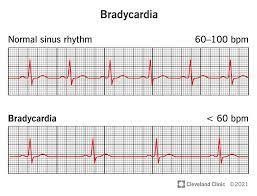A nurse is reviewing the laboratory results of a client who has been taking warfarin for 3 months. Which of the following laboratory results Indicates that the medication has been effective?
Hgb 14 g/dL
WBC count 10,000/mm3
INR 2.0
Platelets 150,000/mm3
The Correct Answer is C
A. Hemoglobin level: The hemoglobin level measures the amount of hemoglobin, the oxygen-carrying protein in red blood cells, in the blood. Warfarin is not directly responsible for increasing or decreasing the hemoglobin level. While warfarin can lead to bleeding complications in some cases, it does not specifically target the hemoglobin level, so it is not a direct indicator of the medication's effectiveness.
B. Platelet count: The platelet count measures the number of platelets in the blood, which are essential for blood clotting. Warfarin does not directly affect platelet production or count. It works by inhibiting the production of certain clotting factors, not by affecting platelets. Monitoring the platelet count is important, but it is not an indicator of warfarin's effectiveness in preventing excessive clotting.
C. Prothrombin time (PT) or activated partial thromboplastin time (aPTT): Prothrombin time (PT) and activated partial thromboplastin time (aPTT) are coagulation tests used to assess different types of anticoagulant medications, such as heparin. Warfarin's effect is measured using the International Normalized Ratio (INR). PT and aPTT are not specific to warfarin therapy and are not used to monitor its effectiveness. The INR is the appropriate laboratory test for assessing the efficacy of warfarin therapy.
D. International Normalized Ratio (INR): This is the correct answer. The International Normalized Ratio (INR) is the laboratory test used to monitor the effectiveness of warfarin therapy. The INR measures the time it takes for the blood to clot and reflects the anticoagulant effect of warfarin. A therapeutic INR within the target range (e.g., INR = 2.0 to 3.0 for most indications) indicates that warfarin has been effective in preventing excessive clotting and reducing the risk of complications associated with blood clots.
Nursing Test Bank
Naxlex Comprehensive Predictor Exams
Related Questions
Correct Answer is B
Explanation
Before administering the first dose of metformin, the nurse should evaluate the client's creatinine level. Metformin is primarily excreted by the kidneys, and its clearance from the body depends on the renal function. If the client has impaired kidney function, metformin can accumulate in the body and lead to potential adverse effects, particularly lactic acidosis.
Monitoring the creatinine level helps assess the client's kidney function and determines whether it is safe to administer metformin. If the creatinine level is elevated, indicating reduced kidney function, the nurse should consult with the healthcare provider to determine the appropriate dose adjustment or consider an alternative treatment option.
Let's go through the other options and explain why they are not the priority laboratory results to evaluate before administering metformin:
A. Potassium level: While monitoring potassium levels is important in some situations, it is not a primary concern before administering metformin. Metformin does not have a significant effect on potassium levels, and it is not a medication known for causing hypokalemia (low potassium levels).
C. Platelet count: Metformin does not have a direct impact on platelet count, and evaluating platelet count is not typically required before starting metformin therapy. Platelet count monitoring may be relevant for certain other medications or medical conditions, but it is not specific to metformin administration.
D. Liver enzymes: While it is essential to monitor liver function in clients on long-term metformin therapy, evaluating liver enzymes before the first dose of metformin is not the priority. Metformin is primarily cleared by the kidneys, and liver enzymes are not directly affected by its initial administration. However, ongoing monitoring of liver function may be necessary during long-term
Correct Answer is D
Explanation
Oxybutynin is an anticholinergic medication commonly used to treat urinary incontinence. One of the adverse effects of anticholinergic medications is the potential for bradycardia, which refers to a slower than normal heart rate. Anticholinergic medications can inhibit the effects of acetylcholine, a neurotransmitter responsible for regulating various bodily functions, including heart rate. Therefore, it is important to assess the client for signs of bradycardia after an unintended higher dose of oxybutynin.
Increased salivation (A) is not an expected adverse effect of oxybutynin. In fact, anticholinergic medications like oxybutynin often have the opposite effect, causing dry mouth and reduced salivation.
Hyperthermia (B) is not a typical adverse effect of oxybutynin. It is more commonly associated with other conditions or medications.
Urinary incontinence (C) is the condition that oxybutynin is intended to treat. It is not an adverse effect but rather the therapeutic effect of the medication.

Whether you are a student looking to ace your exams or a practicing nurse seeking to enhance your expertise , our nursing education contents will empower you with the confidence and competence to make a difference in the lives of patients and become a respected leader in the healthcare field.
Visit Naxlex, invest in your future and unlock endless possibilities with our unparalleled nursing education contents today
Report Wrong Answer on the Current Question
Do you disagree with the answer? If yes, what is your expected answer? Explain.
Kindly be descriptive with the issue you are facing.
